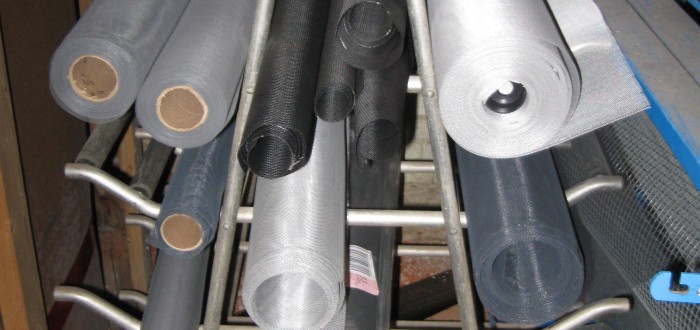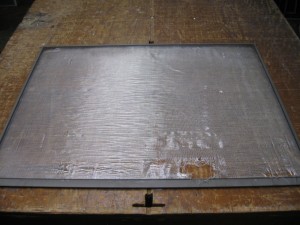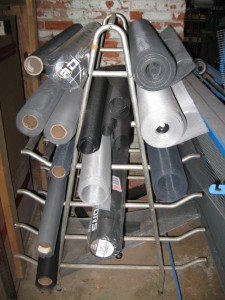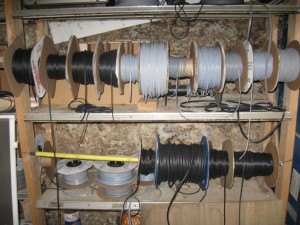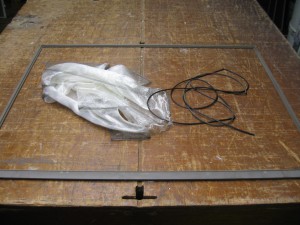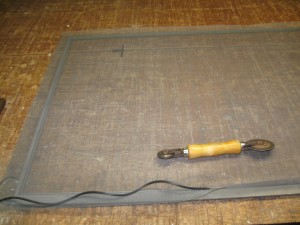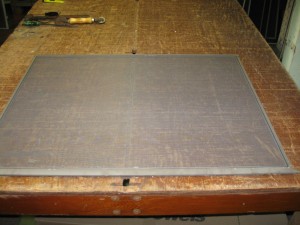A lot of folks come into the hardware store and ask, “What’s in the basement?” If this were one of those low budget horror films I would tell them, “Why don’t you go down and find out?” Then, while everyone in the theater cries, “Don’t go in the basement!” they proceed to go down anyway and after feeling their way around in the dark for awhile finally meet a bloody demise. While our basement may be kind of creepy to some, nothing quite so gruesome happens down there. Usually the only blood to get spilled is if I happen to cut myself on a piece of broken glass or a sharp wire screen. That’s because downstairs is where my shop is to fix customer’s screens and windows.
When someone brings in a screen to be fixed, it is usually because the screen has a hole in it. Sometime it is just worn out or other times they’ve locked themselves out of the house and had to bust a screen to get into an unlocked window. This happens more often than you might think. By the way, if you have to do this, just slit the screen with something sharp, don’t try to bend the screen out of it’s track to save cutting the screening. You’ll just end up bending or breaking the frame and then to fix it the screening will have to be replaced anyway. Whatever you end up with, bring all your parts into the store and we’ll fix it. Replacing the screening is easy, straightening frames and replacing broken corner pieces can also be done but it’s harder.
There are several types of replacement screening to choose from. The basic types are fiberglass or aluminum. Fiberglass is the most common, and cheaper. Aluminum is a little stronger, but it’s more expensive (of course) and harder to work with. Both types also come in light and dark shades to match what you have at home. They also make “pet screen” which is made of heavy black polyester and is very hard, but not impossible for little creatures to claw a hole in. We stock many types and can cut it to the length you need.
The rubber “spline” that goes around the frame to hold the screen in comes in light and dark also to match the screen. It also come in a dizzying plethora of sizes and you have to get the right one to fit your frame and type of screen. If you are planning on trying to replace your screen yourself, please make sure you bring a sample of your old spline with you so we can be sure to get you the right one.
To replace the screening, first you have to pull out the spline that runs around the frame to hold the old screen in place. Then you have to cut a piece of screen a little bigger than the opening. Then you have to work your way around the frame fitting the new spline back into the groove to hold the new screen in. They make a special roller tool to make this easier. When you’ve gone all the way around and you are happy with how the screen is fitted, you take a razor knife and trim off the excess screen from around the outside, being careful not to cut the new screen or yourself. It’s not rocket science, as they say, but it can be tricky to get the new screen tight, but not too tight without puckering it. Also it’s all too easy to cut the new screen with the roller or the razor knife.
If this sound too tricky for you, we’ll be happy to fix your screens for you. It’s not that expensive and it will save you from having to “go into the basement” yourself. Just drop your screen off at the store and in a few days we’ll give you a call to pick them up so you can enjoy those Summer breezes without letting all the critters into your home. Oh, I mentioned windows too? I’ll have to cover those next time, at the Old Hardware Store…

